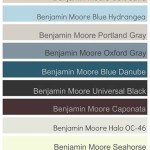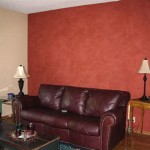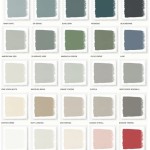Paint Colors For Small Living Rooms With Brown Furniture
Selecting the appropriate paint color for a small living room featuring brown furniture requires careful consideration. The goal is to enhance the space, create a sense of openness, and complement the existing furniture without overwhelming the room. Brown, as a dominant color in furniture, can often make a space feel grounded and warm but potentially smaller if the walls are not painted appropriately. A strategic approach to color selection can transform a cramped area into an inviting and visually larger space.
The interplay between light and color is paramount in a small living room. Dark colors tend to absorb light, making the room feel smaller and potentially claustrophobic. Conversely, lighter colors reflect light, creating an illusion of spaciousness. Thus, the choice of paint color should prioritize light reflectance to maximize the perceived size of the room. Natural light sources should be taken into account as well. A room with ample natural light can handle slightly more saturated colors than one with minimal natural light.
Furthermore, the specific shade of brown in the furniture plays a critical role. Browns can range from warm, reddish-browns to cool, grayish-browns. Identifying the undertones in the furniture is crucial for selecting a complementary paint color. For instance, warm browns pair well with warm neutral colors, while cool browns benefit from cooler tones on the walls. Ignoring these undertones can result in a color clash that detracts from the overall aesthetic of the room.
Understanding Neutral Color Palettes for Small Spaces
Neutral color palettes are often the go-to choice for small living rooms. These palettes offer a versatility that can accommodate a variety of furniture styles and accessories. However, relying solely on white can lead to a sterile and uninviting atmosphere. Introducing subtle variations within the neutral spectrum can add depth and interest to the room without sacrificing the sense of spaciousness.
Off-white shades, such as cream, ivory, and eggshell, provide a softer alternative to stark white. These colors retain the light-reflecting properties of white while adding a touch of warmth. They are particularly effective in rooms with limited natural light, as they help to brighten the space and create a more welcoming ambiance. The slight variations in tone prevent the room from feeling too clinical and allow the brown furniture to stand out without being overshadowed.
Light gray is another excellent neutral option. Its coolness provides a sophisticated contrast to the warmth of brown furniture. However, it is essential to choose a light gray with warm undertones to prevent the room from feeling cold or sterile. "Greige," a blend of gray and beige, offers a balanced neutral that works well with a wide range of brown furniture tones. Its inherent warmth makes it a comfortable and inviting choice for a living room.
Beige, in its various shades, is a classic neutral that complements brown furniture effectively. Lighter beiges create a sense of openness, while slightly darker beiges offer a cozier feel. The key is to avoid beige shades that are too yellow or too brown, as these can create a monotonous and dated appearance. A beige with subtle gray or green undertones can add a touch of modernity to the room.
To add visual interest to a neutral palette, consider incorporating subtle textures and patterns. This can be achieved through textured paint, such as eggshell or satin finishes, or through the use of wallpaper with a subtle pattern. These elements add depth to the walls without overwhelming the space, creating a more dynamic and engaging environment.
Strategic Use of Accent Walls and Color Pops
While light and neutral colors are generally recommended for small living rooms, the strategic use of accent walls and color pops can add personality and visual interest without compromising the sense of spaciousness. An accent wall, painted in a bolder color, can draw the eye and create a focal point in the room. However, it is essential to choose the accent wall and color carefully to avoid making the room feel smaller or unbalanced.
The best wall for an accent color is typically the one that is visually the most prominent or the one that features an architectural element, such as a fireplace or a built-in bookcase. Selecting a shorter wall or one with minimal furniture against it can also prevent the accent color from overwhelming the space. Avoid painting the longest wall in the room as the accent wall, as this can visually shorten the room and make it feel more confined.
When choosing an accent color, consider the undertones of the brown furniture and the overall style of the room. Warm browns pair well with warm accent colors, such as burnt orange, mustard yellow, or deep reds. Cool browns, on the other hand, benefit from cooler accent colors, such as teal, navy blue, or forest green. These colors provide a striking contrast to the brown furniture while maintaining a cohesive color scheme.
If a full accent wall feels too bold, consider incorporating color pops through accessories, such as throw pillows, area rugs, artwork, and decorative objects. These elements can add a touch of color without committing to a full wall of paint. They also offer the flexibility to change the color scheme easily as tastes evolve.
When using color pops, it is essential to maintain a sense of balance. Avoid using too many different colors, as this can create a cluttered and chaotic appearance. Instead, focus on a few key colors that complement each other and the brown furniture. Distribute these colors throughout the room to create a sense of visual harmony.
Complementary Color Schemes and Undertones
Understanding complementary color schemes and undertones is essential for creating a harmonious and visually appealing living room. A complementary color scheme involves pairing colors that are opposite each other on the color wheel. This creates a high-contrast effect that can be both dynamic and engaging. However, when working with a small space and brown furniture, it is crucial to use complementary colors judiciously to avoid overwhelming the room.
For warm brown furniture, consider using blue or green as complementary colors. These colors provide a cooling contrast to the warmth of the brown, creating a balanced and inviting atmosphere. However, it is important to choose lighter shades of blue or green to prevent the room from feeling too dark or cramped. Soft blues, such as sky blue or robin's egg blue, and muted greens, such as sage green or olive green, are excellent choices for a small living room.
For cool brown furniture, consider using orange or yellow as complementary colors. These colors add warmth and energy to the room, creating a cozy and inviting space. However, it is important to avoid overly bright or saturated shades of orange or yellow, as these can be overwhelming in a small room. Instead, opt for softer, more muted tones, such as peach, apricot, or mustard yellow.
Identifying the undertones of the brown furniture is crucial for selecting complementary colors. If the furniture has warm, reddish undertones, choose colors with similar undertones to create a cohesive and harmonious look. If the furniture has cool, grayish undertones, choose colors with cooler undertones to achieve the same effect.
When selecting paint colors, it is always a good idea to test them in the room before committing to a full paint job. Paint a small area of the wall and observe how the color looks at different times of the day and in different lighting conditions. This will help ensure that the chosen color complements the brown furniture and enhances the overall aesthetic of the room.
Ultimately, the best paint color for a small living room with brown furniture depends on personal preferences and the specific characteristics of the room. However, by understanding the principles of color theory, light reflectance, and complementary color schemes, it is possible to create a space that is both visually appealing and comfortable.

Ideas For Wall Colors That Go With Brown Furniture The Inside

Ideas For Wall Colors That Go With Brown Furniture The Inside

Living Room Paint Color Ideas With Brown Furniture Wohimmer Farbschema Braune Couch Dekoration Ideen Wohnung

Living Room Paint Color Ideas With Brown Furniture Couch Dark

9 Paint Colors That Go With Brown Furniture Paintzen

Ideas For Wall Colors That Go With Brown Furniture The Inside

What Is The Best Wall Color For A Living Room With Brown Furniture

Brown Living Room Decor Ideas Home Central Furniture Couch

10 Best Wall Color Ideas For Living Room With Brown Furniture Gallery Sofa

50 Popular Living Room Colors Paint Ideas
Related Posts








